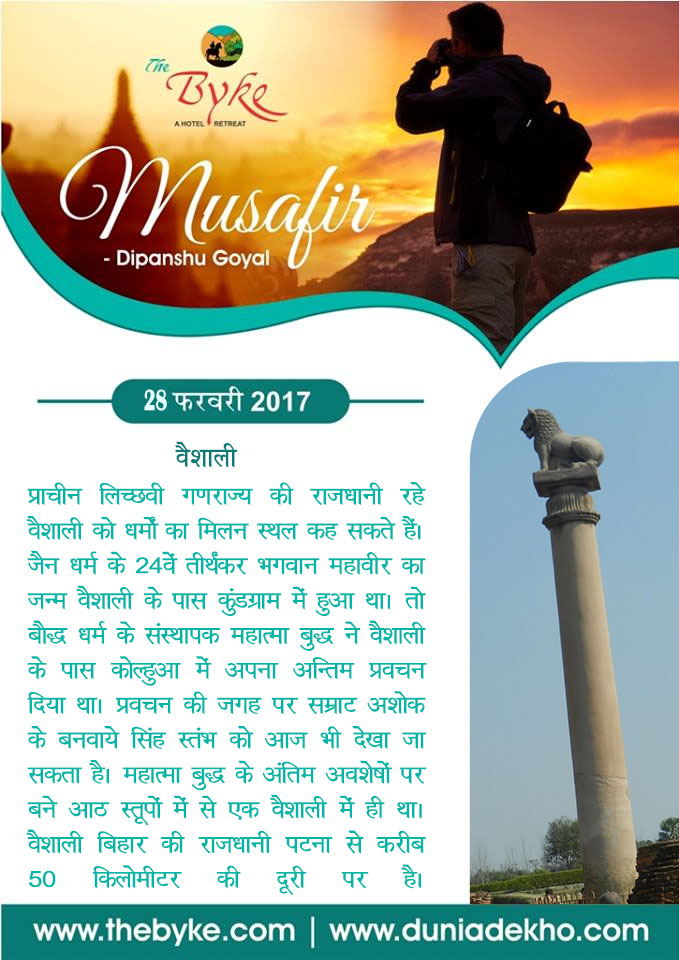
वैशाली VAISHALI
प्राचीन लिच्छवी गणराज्य की राजधानी रहे वैशाली को धर्मों का मिलन स्थल कह सकते हैं। जैन धर्म के 24वें तीर्थंकर भगवान महावीर का जन्म वैशाली के पास कुंडग्राम में हुआ था। तो बौद्ध धर्म के संस्थापक महात्मा बुद्ध ने वैशाली के पास कोल्हुआ में अपना अन्तिम प्रवचन दिया था। प्रवचन की जगह पर सम्राट अशोक के बनवाये सिंह स्तंभ को आज भी देखा जा सकता है। महात्मा बुद्ध के अंतिम अवशेषों पर बने आठ स्तूपों में से एक वैशाली में ही था। वैशाली बिहार की राजधानी पटना से करीब 50 किलोमीटर की दूरी पर है।
Historians maintain that one of the world’s first democratic republics with an elected assembly of representatives flourished here in Vaishali the 6th century B.C. in the time of the Vajjis and the Lichchavis. And while Pataliputra, capital of the Mauryas and the Guptas, held political sway over the Gangetic plain, Vaishali was the center for trade and industry.
Lord Buddha visited Vaishali frequently and at Kolhua, close by, preached his last sermon. To commemorate the event, Emperor Ashoka, in the third century B.C. erected one of his famous lion pillars here. A hundred years after the Mahaparinirvana of the Buddha – Vaishali hosted the second great Buddhist council. Two stupas were erected to commemorate this event. Jainism, too, has its origins in Vaishali, for in 527 B.C., Lord Mahavir was born on the outskirts of the city, and lived in Vaishali till he was 22. Vaishali is then twice blessed and remains an important pilgrim center for both Buddhists and Jains, attracting also historians foraging for the past. Vaishali is 50 Km from Patna.
